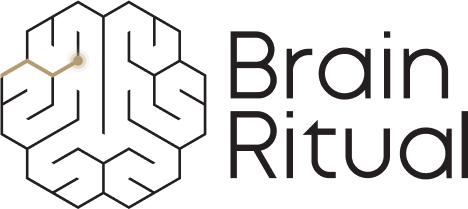Table of Contents
At a Glance
|
These days, many of us seem to be juggling more stress than ever before. For people prone to migraine, stress not only leaves you feeling drained but can also act as a powerful trigger for migraine attacks.
You might have noticed that during stressful periods, like after a busy workweek or following a family conflict, a migraine can start to creep in. This connection between stress and migraine is complex, but understanding it can give you more control and greater confidence in managing your health.
On the other hand, some people find they can just about make it through their demanding workweek, only to have a migraine strike as soon as they try to relax on the weekend. This so-called “weekend migraine” phenomenon may be partly explained by sudden drops in stress hormones like cortisol when the body finally begins to relax. During the week, higher cortisol levels help keep inflammation and pain sensitivity in check. But when these levels suddenly fall as you unwind, it can trigger migraine attacks in those who are susceptible.
In this article, we’ll answer the question, "Are stress migraines a thing?" We’ll also explore how stress affects your brain and body, signs that your migraines might be stress-related, and practical techniques to help you feel more balanced and resilient.
Whether it’s through breathing exercises, gentle movement, mindfulness, or better sleep habits, taking small, simple steps can make a meaningful difference over time.

How Stress Affects Migraine
When we talk about stress, we usually think of deadlines, conflicts, or unexpected life events. Beyond these feelings, stress activates the entire body to help us face potential challenges. In fact, up to 80% of people with migraine report stress as a major trigger, making it one of the most common and impactful lifestyle factors.
At times of stress, your brain triggers the release of hormones like cortisol and adrenaline to prepare the body for quick action. This response, commonly known as the “fight or flight” mode, raises your heart rate, increases blood pressure, and quickly mobilizes energy stores to help you respond. This also raises oxidative stress, a common denominator of all migraine triggers.
While this reaction can be helpful in the short term, frequent or long-lasting stress can disrupt your body’s natural balance and increase the risk of problems like migraine.
Brain energy and metabolism
One of the most important effects of chronic, long-lasting stress is how it changes your brain’s energy balance.
Although releasing cortisol and adrenaline is helpful in emergencies, constant activation makes it harder for your brain to maintain stable energy levels. This can create a perfect environment for a migraine attack, especially if you’re sensitive to other triggers like bright lights, certain foods, or disrupted sleep.
Neurotransmitter changes
Stress also affects neurotransmitters, the chemical messengers that help nerve cells communicate.
Imbalances in neurotransmitters such as serotonin and dopamine can lower your brain’s threshold for pain, making you more likely to experience an attack.
These chemical shifts can also influence your mood, adding to feelings of tension and vulnerability.
Inflammation and blood flow
In addition to energy and chemical changes, stress promotes inflammation (your body’s natural defense mechanism, which can sometimes become overactive) and oxidative stress (an imbalance between harmful free radicals and protective antioxidants) throughout the body. This can irritate nerves and blood vessels.
Changes in blood flow and vessel dilation (widening of blood vessels) can contribute to the throbbing, pulsating pain that many people associate with migraine headaches.
A self-reinforcing cycle
Once a migraine starts, it often causes more stress. Pain, missed activities, and worry about future attacks all feed into a seemingly never-ending cycle that feels hard to escape.
Over time, this ongoing loop of stress and migraine can lower your resilience and make attacks more frequent or intense.
Many people also notice different phases during a stress migraine. Recognizing these phases can help you act earlier and feel more prepared.
The prodrome phase can begin 24 to 48 hours before pain starts and may include yawning, mood changes, neck stiffness, or food cravings.
The attack phase may include an aura lasting 5 to 60 minutes followed by the headache phase lasting 4 to 72 hours. This brings the familiar head pain and sensitivity to light, sound, or movement.
Following resolution, the postdrome (recovery phase) can leave you feeling drained or foggy for up to two days afterward (The Migraine Trust and Cleveland Clinic).
Understanding how stress affects your brain and body is a powerful first step. By recognizing these patterns, you can begin to take a more targeted, supportive approach to managing migraine and breaking the cycle.
Signs Your Migraine May Be Stress-Related
Recognizing when you have a stress-induced migraine can help you take more proactive steps to manage them.
One of the most common signs is timing: migraines that occur after particularly busy or emotionally challenging days may point to stress as a key trigger. You might notice headaches starting after big presentations, family conflicts, or long periods of intense focus at work.
Physical tension is another important clue that can act as an early warning sign. Many people experience migraine stress symptoms like tightness in the neck, shoulders, or jaw in the hours or days leading up to a migraine. This tension often builds up gradually, alerting you to an oncoming attack.
Emotional shifts can also signal stress-related migraine. Feeling unusually anxious, irritable, or emotionally drained right before an attack suggests your nervous system may be overwhelmed.
Migraine stress triggers are not always negative things. Some people also experience what’s known as a “let-down” migraine, which happens when stress levels suddenly drop, such as on the first day of a vacation or after finishing a major project. While it might seem counterintuitive, this rapid change in overall stress load can sometimes trigger an attack.
Many people also wonder how long stress migraines last. The duration can vary widely, but they often last anywhere from a few hours to several days if not addressed early.
Understanding these patterns can give you valuable insight into the role of stress in your migraines and help you discover practical ways to reduce its impact.
Why Migraines Strike After Stress: Let-down / Relaxation Headaches
Migraines can also occur some time after a stressful period. For example, they may strike at the start of a relaxing weekend or after completing a major project at work. This phenomenon is known as a “let-down” headache.
During periods of stress, the body produces higher levels of cortisol and adrenaline. These hormones help maintain blood pressure, keep glucose available, and heighten neural alertness. This stress-driven state can temporarily mask migraine susceptibility.
When the stress ends, cortisol and adrenaline levels may drop quickly. This can lead to a parasympathetic rebound and sudden vasodilation. These shifts can affect brain energy metabolism and reduce the delivery of glucose and oxygen to sensitive brain regions.
For people with mitochondrial dysfunction or impaired oxidative metabolism, this sudden disruption can make it harder for the brain to maintain balance. In these cases, the transition into a relaxed state may actually trigger a relaxation-type migraine.
Stress Management Techniques for Migraine
Pacing
Pacing is an essential strategy for managing migraine, particularly for those whose attacks are triggered or worsened by stress or overexertion.
Unlike reactive approaches, pacing is proactive. This means deliberately balancing activity and rest to avoid the familiar “boom and bust” pattern, where you end up doing too much on good days and feeling drained or unwell afterward.
For people with migraine, pacing helps prevent overstimulation of the nervous system, supports energy conservation in the face of mitochondrial or metabolic challenges, and lowers the risk of triggering attacks due to sudden changes in physical, cognitive, or emotional load. This might include overexerting during exercise or pushing through a long day of back-to-back meetings.
Pacing involves breaking tasks into manageable steps, allowing adequate recovery time, and keeping daily routines consistent, especially around sleep and meal times. This approach helps create a more stable internal environment, which can reduce the brain’s sensitivity to migraine triggers.
Pacing works best when you listen to early warning signs from your body, plan your day with buffer time between demanding activities, avoid stacking cognitive or physical exertion, and make space for low-stimulation rest even on days when you feel well. With consistency, pacing becomes a proactive habit and part of your routine, not just something you fall back on when symptoms appear.
Breathing and relaxation exercises
Breathing exercises are a simple yet powerful way to help calm your nervous system and ease physical tension.
When you feel stressed, your breathing often becomes shallow and rapid, which can increase feelings of anxiety and make your body feel on edge. By practicing slow, deep breathing, you signal to your body that it is safe to relax.
One effective method is diaphragmatic breathing, sometimes called belly breathing. Place one hand on your abdomen and take a slow breath in through your nose, letting your belly rise as you fill your lungs. Then exhale slowly through your mouth. This technique encourages a full exchange of oxygen and helps reduce muscle tension.
Another method is the 4-7-8 breathing method, which is often used in yoga and relaxation practices. Breathe in through your nose for a count of four, hold your breath for a count of seven, and then exhale slowly for a count of eight. A few repeats of this breathing pattern can help lower your heart rate and create a sense of calm, making it a useful tool during stressful moments or when you feel a migraine starting to build.
Understanding how to relieve stress migraines with practical breathing exercises can make a big difference in long-term management.

Proper nutrients and antioxidants to deal with increased demands
Micronutrients, electrolytes, ketone bodies, and antioxidants all play complementary roles in supporting the brain during periods of stress and helping to reduce oxidative damage. These are key factors in migraine susceptibility.
Stress increases the production of reactive oxygen species (ROS), which can overwhelm the brain’s antioxidant defenses, disrupt mitochondrial function, impair energy production, and lower the threshold for migraine attacks.
Key micronutrients like magnesium, B-vitamins, and zinc support mitochondrial energy production, help regulate neurotransmitters, and assist in managing cortisol levels.
Electrolytes are essential for stabilizing neuronal excitability and preventing the ionic imbalances that may contribute to cortical spreading depression (a wave of electrical disturbance in the brain that’s linked to migraine aura and pain). As ketone bodies provide a more efficient and antioxidant-sparing energy source for the brain, they may help reduce oxidative stress and support mitochondrial resilience.
Antioxidants such as glutathione, vitamin C, and coenzyme Q10 help neutralize reactive oxygen species (ROS) and protect sensitive brain tissue. Together, these elements support the brain’s metabolic flexibility and stress resilience, helping to buffer against migraine attacks during or after high-stress periods.
Lifestyle factors such as diet and hydration can also support migraine resilience. You can learn more in our guide to Foods That Help with Migraines and migraine foods to avoid list.
A nutrient-dense, whole foods diet provides a great foundation, especially during times of stress, when the brain’s nutritional demands may increase. In these moments, high-quality supplementation can offer added support.
For those looking to complement their routine with a structured nutritional approach, Brain Ritual® was designed to support mitochondrial function, antioxidant defense, and brain energy during high-stress periods.
Progressive muscle relaxation
Progressive muscle relaxation (PMR) is a technique that helps release physical tension and promote a sense of calm.
It involves intentionally tensing and then relaxing different muscle groups in your body, helping you become more aware of where you hold stress. This method can be especially helpful before going to bed or at the end of a stressful day.
To try PMR, start by focusing on one muscle group at a time. For example, gently squeeze your fists and hold the tension for about five seconds, then slowly release and notice the feeling of relaxation. Then, using the same approach, move through other areas of the body like your shoulders, face, or legs.
Regularly practicing PMR can improve body awareness, making it easier to notice and reduce tension before it builds into a migraine trigger. This simple, flexible approach requires no special equipment and can easily be included in your daily routine.
Meditation and mindfulness
Meditation and mindfulness practices can be powerful tools for managing stress and supporting overall brain health.
By learning to focus your attention and stay present, you can help calm your nervous system and reduce the mental chatter that often fuels anxiety and tension.
You don’t need to spend long periods sitting in silence to benefit, as even a few minutes a day can make a big difference.
Simple techniques like focusing on your breathing, doing a short body scan (a practice where you mentally scan your body for areas of tension or relaxation), or using a guided meditation app make it easy to get started.
Regular mindfulness practice can help you notice early signs of stress or migraine, allowing you to respond more effectively before an attack escalates. Building this habit over time helps support greater emotional resilience and a stronger sense of balance.
Sleep and daily routine
A regular sleep schedule is one of the most important yet often overlooked parts of migraine stress management. Poor or inconsistent sleep can raise stress levels, lower your pain threshold, and make migraines more frequent and more severe.
Ideally, try to go to bed and wake up at the same time every day, even on weekends. Creating a calming bedtime routine, such as gentle stretching, reading, or practicing relaxation techniques, can help signal to your body that it’s time to wind down.
To support restorative sleep and reduce stress before bedtime, aim to create an ideal sleep environment that is cool, dark, and quiet. Avoid blue light exposure for at least 1–2 hours before bed by using warm lighting or blue-light blocking tools.
Melatonin can also be a helpful part of your stress management strategy. Known as the “sleep hormone,” it not only supports sleep onset but also acts as a powerful antioxidant, helping to neutralize some of the harmful free radicals that are produced by stress. A win-win for both sleep and brain health.
In addition to sleep, a consistent daily routine can help stabilize your nervous system and reduce unexpected stress. Eating meals at regular times, scheduling breaks, and balancing work and relaxation help support a steadier internal rhythm. Over time, these simple habits can help reduce migraine frequency and improve overall well-being.
Gentle movement and activity
Regular gentle movement can be a valuable way to manage stress. Light activities like walking, stretching, yoga, or tai chi help reduce muscle tension, improve circulation, support joint health, and encourage your body to release natural feel-good chemicals such as endorphins.
Your goal should not be intense exercise or pushing yourself to the limits, but rather to move in a way that feels supportive and calming. Short daily walks or a few minutes of gentle stretching can make a meaningful difference in how you handle stress and may help lower migraine frequency over time.
It’s important to listen to your body and avoid overexertion, as pushing too hard may trigger migraines instead of preventing them. Incorporating gentle movement into your routine helps build resilience and can promote a strong connection between your body and mind.
Cognitive and mindset approaches
How you think about stress can strongly influence how your body reacts to it. If you do not classify a situation as stressful, even though it is the same situation, it will not trigger a strong stress response.
Developing a more flexible, compassionate mindset may help lower overall stress levels and reduce the likelihood of experiencing a migraine.
These cognitive strategies include reframing negative thoughts, practicing self-compassion, and setting realistic expectations. For example, learning to see challenges as opportunities for growth rather than as threats can help shift your body away from a constant stress state.
Some people find that working with a therapist or coach can be helpful. Approaches like cognitive behavioral therapy (CBT) focus on identifying and changing unhelpful thought patterns. Over time, strengthening your mental resilience can support a steadier nervous system and help you feel more in control when life gets challenging.
To sum up, a few simple daily habits that support migraine stress management include:
Keeping a consistent sleep schedule, and if needed, using melatonin to support sleep onset and protect the brain from stress-related oxidative damage.
Taking short movement or stretch breaks throughout the day.
Practicing gentle breathing or mindfulness, even for a few minutes.
Staying hydrated and eating balanced meals at regular times.
Listening to early warning signs from your body and using pacing to balance activity and rest.
Reframing how you interpret challenging situations to help reduce the intensity of your body’s stress response.
Supporting brain energy and antioxidant defenses with proper nutrients, especially during high-stress periods.
Setting realistic expectations and taking mental breaks when needed.
Final thoughts
Stress can be a powerful migraine trigger, but it’s also something you can learn to work with over time. Simple, steady steps, such as pacing, proper nutrients and clean energy from ketone bodies, melatonin to support restorative sleep, breathing exercises, gentle movement, and developing better sleep habits, can raise your threshold and defense against stress induced negative consequences and help you feel more in control and gradually reduce the impact of stress on your life.
There is no need to tackle everything at once. Start with one or two small changes, and practicing them consistently can help build confidence and set the stage for bigger improvements over time.
As you learn to recognize your personal stress patterns and begin choosing techniques that work for you, you may find that your overall resilience grows too. Simply feeling more balanced and better prepared can make a big difference in how you navigate both daily life and migraine challenges.




